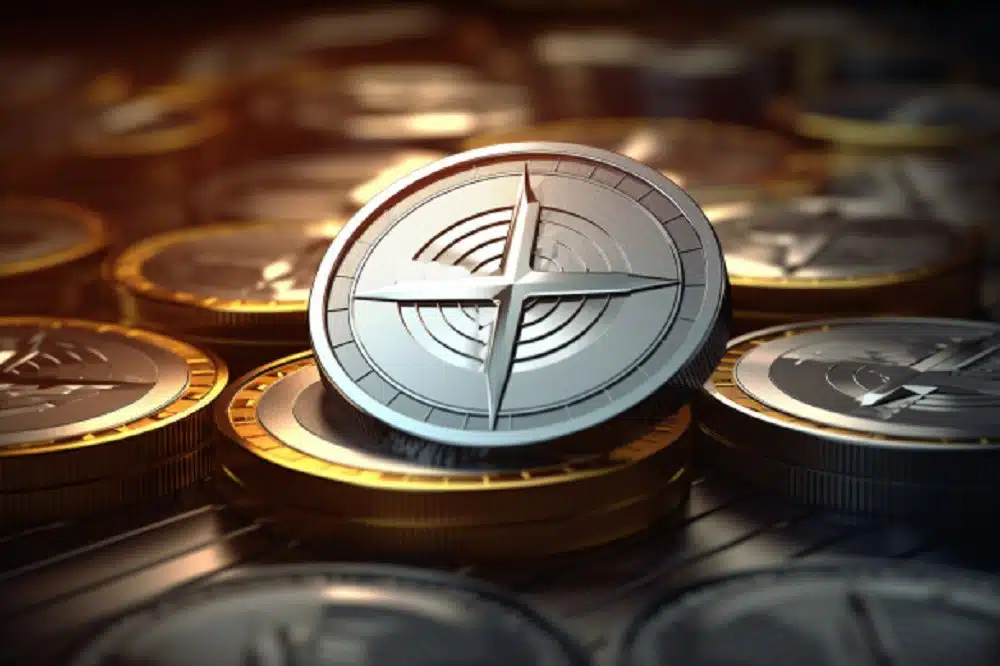Litecoin (LTC) is a digital currency and network based on blockchain technology. Its primary purpose is to offer users a more accessible and cost-effective option than the flagship cryptocurrency, Bitcoin (BTC).
With Bitcoin facing increasing criticism due to its slow transaction speeds and high transaction fees, Litecoin emerged as an option for users willing to overlook the network’s limitations. Regarded as the “digital silver” by the crypto community, Litecoin offers a more affordable and accessible alternative to Bitcoin’s “digital gold” as a store of value.
Litecoin Explained
Litecoin operates similarly to Bitcoin in that it is a decentralized network and uses blockchain technology. It is a platform for peer-to-peer transactions, allowing users to transfer digital currency between wallets.
The transactions are conducted without the need for a central authority or intermediary. Over the years, Litecoin has gained significant popularity as a viable alternative to Bitcoin because of its accelerated transaction speeds and lower transaction fees.
Since it’s created from Bitcoin’s source code, it inherits all the blockchain capabilities. Such capabilities include its support for various digital assets, such as Ordinal NFTs and BRC-20 tokens, albeit under distinct names specific to the network.
How It Works
The security of the Litecoin protocol is upheld by the PoW consensus mechanism, where crypto miners utilize their computing power to solve complex equations required to generate new blocks. In recognition of their crucial role in preserving the network’s integrity and facilitating block creation, miners are rewarded with LTC tokens through block rewards.
This incentivized process strengthens the Litecoin ecosystem’s security. However, Scrypt, the Litecoin mining algorithm, differs slightly from the typical PoW protocols.
Unlike Bitcoin’s SHA-256 hash function, Scrypt mining software requires higher memory capacity. As a result, it is always challenging to establish the same scale of large-scale ASIC (application-specific integrated circuit) and GPU mining rigs that currently dominate the Bitcoin mining landscape.
What Is The Litecoin Halving?
The Litecoin halving happens every four years. This implies that the halving cycle renews itself once 840,000 blocks have been attained.
Moreover, in each halving period, there is a 50% drop in the amount of LTC tokens available through block rewards, halving the rate of new coins entering circulation. This deliberate slowdown of coin release often brings about positive effects, including potential price boosts for LTC.
Additionally, this event reduces sell pressure on miners. Another benefit of halving events is that it contributes to the overall market dynamics and investor sentiment surrounding the LTC token.
History Of Litecoin
In October 2011, Litecoin was introduced into the market by Charlie Lee, an experienced former engineer at Google and Coinbase. At that time, Bitcoin mining faced increasing centralization.
Hence, Lee’s objective was to establish a blockchain network that remained accessible and resilient against institutional control. By launching Litecoin, Lee paved the way for a decentralized future, aligning with his vision of a more inclusive and community-driven crypto ecosystem.
Its unique hashing algorithm perfectly fits small-scale crypto miners rather than large mining firms with immense resources. However, the ASIC-resistant mining system was soon displaced with the development of the first Litecoin-focused ASIC miner.
Bitcoin Vs. Litecoin
Litecoin has the upper hand as an exceptionally effective network in terms of scalability and performance in peer-to-peer crypto transactions. With an average processing time of approximately two and a half minutes, Litecoin transactions outpace Bitcoin by a factor of four, providing significantly faster transaction speeds.
Moreover, Litecoin handles an impressive volume of approximately 57 transactions per second, outperforming Bitcoin’s seven transactions per second rate. Furthermore, Litecoin’s transaction fees are comparatively lower than Bitcoin’s.
Transaction fees on Litecoin are around $0.03, while the same transfer on Bitcoin could cost a user an average of $5-10. Meanwhile, Bitcoin encompasses a broader significance beyond its performance metrics, with holders recognizing it as a store of value and a hedge against inflation.


